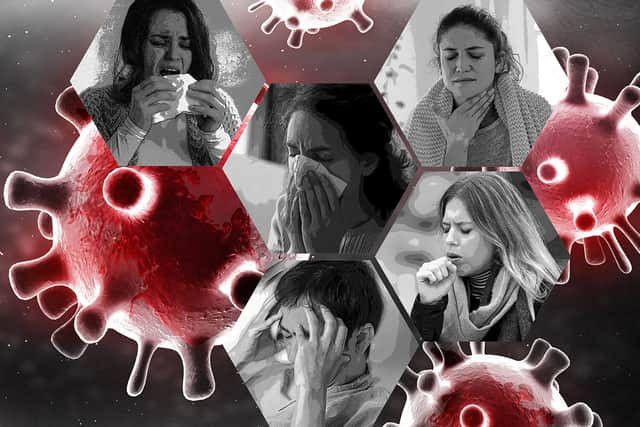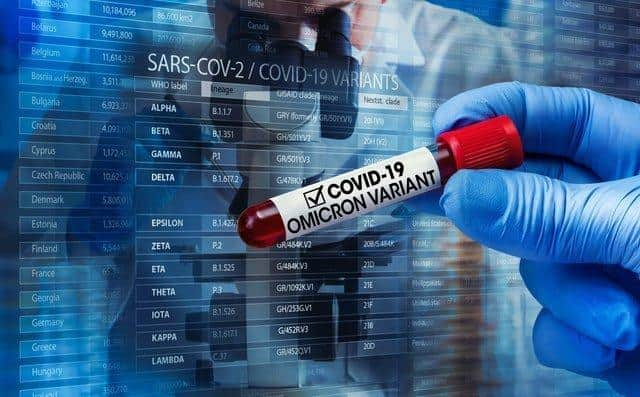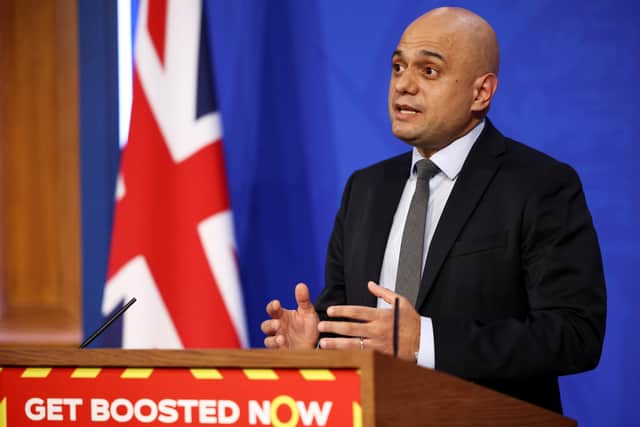‘Stealth’ Omicron: Scientists discover cases of new Covid variant in London - how does your area compare?
and live on Freeview channel 276
A coronavirus strain branded ‘stealth Omicron’ now accounts for up to almost 6% of Covid infections in some London boroughs.
Cases of the Omicron sub-variant BA.2 have been in the UK for some time - with the first example found on December 6, 2021.
Advertisement
Hide AdAdvertisement
Hide AdBut numbers are growing both here and abroad, and the UK Health Security Agency (UKHSA) named it a “variant under investigation” on January 21.


The Wellcome Sanger Institute analysed 38,000 positive Covid-19 tests taken in the week to January 15, and found one in 100 samples were now stealth Omicron across England.
And in some parts of London, up to 6% of positive Covid tests are estimated to be stealth Omicron.
Advertisement
Hide AdAdvertisement
Hide AdThe institute does not sequence all positive tests, so the figures can be used to work out the proportion of stealth Omicron cases in each area.
Find out the situation in your borough with our interactive map.
Loading....
It analysed 227 tests from Harrow, successfully identifying a variant in 224 of them, and BA.2 was found in nine tests, representing 4% of those identified.
While 347 tests were analysed in Barnet, 342 of which successfully identified a variant, and nine of these were found to be BA.2, representing 2.6% of those identified.
Advertisement
Hide AdAdvertisement
Hide AdIn Richmond-upon-Thames, 128 tests were looked at, with 121 successfully identifying a variant.


Seven tests were found to be BA.2 - making that 5.8% of all those identified, the highest percentage in the capital.
Newham and Brent saw seven and six tests found as BA.2 - or 5% and 2.8% respectively.
It is not known where Stealth Omicron originated, with the first cases found in the Philippines and high numbers being reported in Denmark.
Advertisement
Hide AdAdvertisement
Hide Ad

It got its nickname because it does not have a tell-tale marker on its spike protein, revealed through a common PCR test, which was previously used to monitor Omicron’s spread.
But both PCR and lateral flow tests still identify Covid infection.
Dr Meera Chand, Covid-19 incident director at the UKHSA, said: “It is the nature of viruses to evolve and mutate, so it’s to be expected that we will continue to see new variants emerge as the pandemic goes on.
“Our continued genomic surveillance allows us to detect them and assess whether they are significant.
Advertisement
Hide AdAdvertisement
Hide Ad“So far, there is insufficient evidence to determine whether BA.2 causes more severe illness than Omicron BA.1, but data is limited and UKHSA continues to investigate.”
Health secretary Sajid Javid said: “We are learning to live with this virus – and thanks to our world-leading surveillance system we can rapidly detect and carefully monitor any genetic changes to Covid-19.
“Our exceptional vaccine rollout means the number of people severely affected by Covid-19 is low, and the UK’s innovation and research has discovered life-saving treatments for those most at risk from Covid-19.”
Comment Guidelines
National World encourages reader discussion on our stories. User feedback, insights and back-and-forth exchanges add a rich layer of context to reporting. Please review our Community Guidelines before commenting.
